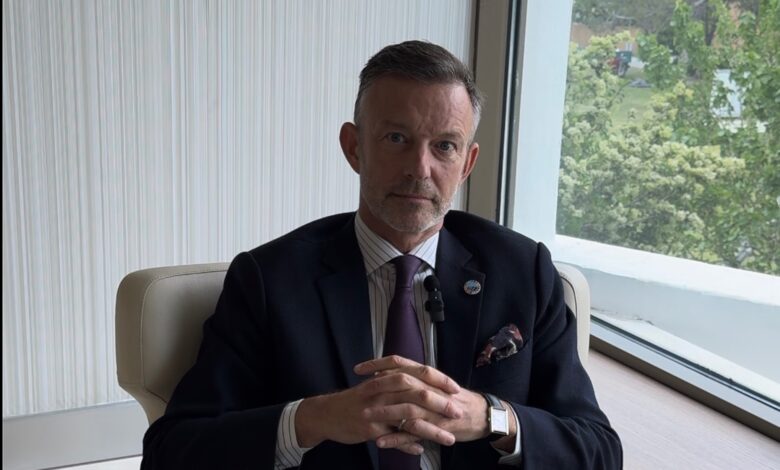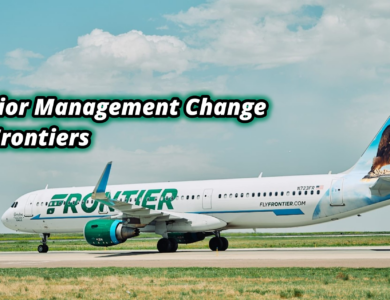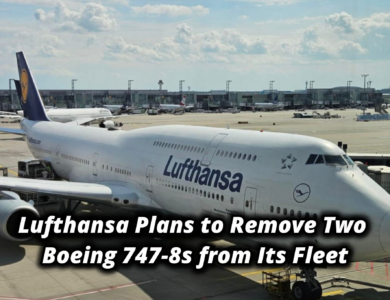ACI Europe Director General Olivier Jankovec Responds to HavaSosyalMedya’s Questions

HavaSosyalMedya took part as an official media partner in the 16th ACI EUROPE Regional Airports Conference & Exhibition, held on 28–29 April 2025 under the auspices of YDA Dalaman Airport. The event convened key stakeholders from across the European aviation sector, offering a platform for in-depth discussions on the current challenges and future outlook of regional airports.
Within the scope of the conference, HavaSosyalMedya conducted an exclusive interview with ACI Europe Director General Olivier Jankovec.
Question 1: Türkiye is showing impressive aviation growth, with total air connectivity expanding by 24% compared to pre-pandemic levels – compared to a European average of -14%. How have regional airports contributed to the success, and what issues can be addressed to safeguard and reinforce aviation’s critical role in Türkiye’s economic and social development?
I think the regional airports in Türkiye have been essential for developing the air connectivity of the country. If we look simply at direct air connectivity, the regional airports account for 66% of the country’s direct air connectivity, while Istanbul accounts for 34%. Of course, if we look at hub connectivity, Istanbul Airport accounts for 90% of it. But that data on the role of regional airports for direct connectivity is really crucial for the country.
First, for its tourism industry, it’s a lot about getting the tourists directly where they want to spend their holidays. It is also about the VFR (Visit Friends and Relatives) traffic. There is a huge diaspora of Turkish people living abroad, and they are from all over the country, so accessibility to their homeland and their home region is key. Finally, it’s about supporting economic development in a balanced manner across the whole country, and not just in the big cities.
To reinforce the critical role of aviation for the global positioning of Türkiye, its economy, and its territorial development, three things come to my mind. The first one is ensuring that low-cost carriers from across Europe can access the Turkish market. There are presently restrictions to their ability to do so which are outdated. If you want to maximize, in particular, the tourism potential of Türkiye in line with its 2023 tourism strategy, you really need to allow more low-cost carriers into the country to diversify the connectivity.
The second factor is allowing airports to reflect inflationary pressures and their investment costs in what they charge to airlines. This is about favoring long-term development, allowing the Turkish airports to continue to modernize and to develop their capacity.
And the third one is about sustainability and decarbonization. I think it’s crucial that Türkiye builds its own sustainable aviation fuel (SAF) supply chain, because this will be indispensable for the competitiveness of any aviation market in the future.
Question 2: The post-pandemic recovery of European airports has been uneven. What targeted policy measures would you recommend to support a more balanced and resilient recovery across the continent?
I think this imbalance in the recovery comes from different factors. One is certainly the geopolitical tensions which are hurting some markets more than others. And there, unless we come to more peaceful resolutions of those tensions, there’s not much that can be done to favor the recovery of those airports that are impacted by geopolitical tensions.
The second is the fact that the structure of the European aviation market has changed tremendously. The main drivers of the recovery have been low-cost carriers—ultra low-cost carriers in particular—and leisure and VFR demand. And there I come back to the point I made earlier: it’s crucial to abandon restrictions to market access for all airlines, giving the ability of all airlines to compete in the market and to access the market. And that includes, of course, low-cost airlines.
And then the third factor is the ability to support regional airports in terms of their investment and in terms of their financial viability, especially airports with less than one million passengers per year. This is something that needs to be carefully considered to make sure those airports have the means to support their operations and also to continue to invest in the future.
Question 3: For airports operating in tourist-driven regions like Dalaman, which technologies or infrastructure investments should be prioritised to achieve sustainability goals more effectively?
I think Dalaman Airport is a prime example of what needs to be done, and I can only congratulate them for moving forward with this extensive solar power installation on their roof. This is now allowing them to secure 55% of their electricity needs. They will go up to 100% next year, thanks to favorable changes in the Turkish regulations.
So, for airports like Dalaman, especially airports serving destinations across the Mediterranean, solar power is the way to go. And I think it’s a fantastic example, not just in Türkiye, not just in Europe, but globally to follow.
Question 4: In your view, what kind of public-private partnerships or financial incentives could be considered to support the growth of regional airports?
This is a question which, of course, touches on the political choices of each government. But if you look back at what has happened in Europe over the past 30 years, we’ve seen an increasing participation of private interest in developing and managing airports. This has gone together with the transformation of airports and the evolution of their business model. Airports today are businesses in their own right, focused on fiscal discipline, on their ability to invest, on commercial acumen, and on sustainability.
And I think the role of private investors there is crucial moving forward. This is a development which I think has allowed the European airport sector to stand out compared to other regions of the world. I can only encourage governments to look at concessions and these kinds of models. Of course, they need to be tailor-made to their own specific needs, their own policy, and political priorities. But the involvement of private investors and public-private partnerships have been a real success story for Europe.



